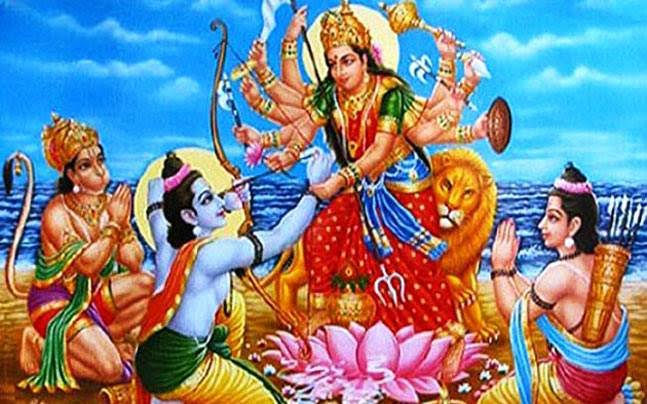LALITHA SAHASRANAMAM # 213
- S Subramaniam
- Jul 31, 2023
- 3 min read
LALITHA SAHASRANAMAM

महारूपा महापूज्या महापातक-नाशिनी ।
महामाया महासत्त्वा महाशक्तिर् महारतिः ॥ ५४॥
Maharupa Mahapujya Mahapataka nashini Mahamaya Magasatva Mahashaktir Maharatih – 54
महापूज्या (213)
Mahapujya (213)
Meaning:
Devi is worshiped in a grand way. It also means Devi is worshiped by great souls.
Interpretation:
The Maha in the Namah denotes grandness and Pujya refers to worship.
Interestingly, if the focus is in Pujya then the Namah means a grand method of worship but if the focus is on Maha, then the Namah will mean Devi is worshiped by Great souls.

The other most popular Shloka where the term Maha Pujya is used is in the Sastha Namaskara Slokam where we come across:
लोका वीरम महा पूज्यम सर्व रक्षा करम विभूम,
पार्वती हृदयानंदम सस्थारम प्रणमाम्यहम्

Quote from Rig Veda:
Devi, herself, declares in Devi Suktam (composed by Rishika Vak Ambhrini who had initially named it as Vak Suktam which later came to be known as Devi Suktam) that she is the Prime object of worship - the first of those who are worthy of worship:
अ॒हं राष्ट्री᳚ सं॒गम॑नी॒ वसू᳚नां चिकि॒तुषी᳚ प्रथ॒मा य॒ज्ञिया᳚नाम् । तां मा᳚ दे॒वा व्य॑दधुः पुरु॒त्रा भूरि॑स्थात्रां॒ भूर्या᳚ वे॒शयन्᳚तीम् ॥ ३॥
I am the ruling Queen, I am the authority and amasser of treasures, I am full of wisdom, I am the first of those who are worthy of worship through Yajna (fire and sacrifice). It is me, the Devas have installed in many places, in many directions, with many homes for me to enter and abide in.
Classification of Devi worship
It is difficult to classify the methods of worship of Devi for each type is unique in itself and vary very differently from the other method. However, for basic understanding, the following categories are discussed
Vedic vs Tantric
Those types of pujas that are mostly confined to homes and where the prescribed Shodasa Upacharas are followed, Vedic mantras are chanted, fall under the category of Vedic Worship.

Tantric form of worship is more elaborate, more ritualistic. They may / may not include animal sacrifice. The community Durga Puja observed in Bengal can be cited as an example for this category. (It may be noted that at the Belur Mutt, during the annual Sharadiya Durgotsav, no animal sacrifice is allowed. Swami Vivekananda had replaced the practice by a symbolic sacrifice of a pumpkin).
Agama Shastra
Apart from the above worship of Devi in temples follow the rules Agama Shastras. The prescribed rules of Agama Shatra might vary from region to region.

Evoking Devi through Kundali
This method of worship is exclusively meant for advanced levels of sadhakas. Here the main focus is on Meditation. Devi is evoked worshiping her movement from one chakra to the next higher one.
Sri Vidya Upasana
This method is the highest level of Devi worship. Basic requirement is that the sadhaka should have obtained proper Diksha from his guru. Chandi Homam, Nava varna pooja, Maha Meri worship, Bhagawathy Seva etc. fall under this category.
Author's Notes:
We discussed in the second section of this write-up above that Devi is worshiped by great souls.
The Details are presented by the
author here in below:

Worship of Devi by Lord Shiva himself: This subject will be discussed in detail when we come to the Namah Maha Bhairava Poojitha.

Worship of Devi by Lord Rama: This finds mention in the Ramayana. Before the start of war against Ravana, Shri Rama is believed to have offered prayers to Devi Durga seeking victory.
Devi is usually worshiped during the Spring season (Basant ritu). Since Rama worshiped her during Autumn (Sharad ritu) his awakening of Devi Maa is referred to as Akal Bodhan. The custom is still followed during the grand worship of Devi during Durga Puja in Bengal.

Worship of Devi by Lord Krishna:
We find mention about this Devi Mahatmyam. Argala Stotram, a hymn devoted to Devi Durga is usually chanted after Chandi Patt contains the following sloka
कृष्णेन संस्तुते देवि शाश्वत-भक्त्या सदा-अम्बिके |
रूपं देहि जयं देहि यशो देहि द्विस्सो जहि ||21||
Krishnena Samstutay Devi
Shashvad Bhaktyaa Sada Ambike Roopam Dehi Jayam Dehi Yasho Dehi Dvisho Jahi.’
Salutations to the Supreme Devi Ambika, Who is Always worshiped by Lord Krishna with a Continuous Flow of Devotion.
O Devi, Please Grant me (Spiritual) Beauty, Please Grant me (Spiritual) Victory, Please Grant me (Spiritual) Glory and Please Destroy my (Inner) Enemies.

The great contributions of Sri Adi Shankara who encouraged Devi worship and who composed several hymns in praise of Devi including the Magnum Opus Soundarya Lahari and Sri Ramakrishna Paramhansa who introduced to the worship of Maa Kali at the Dakshineshwar Temple at Kolkata needs to be mentioned here.
Disclaimer: All matters contained in this article are the property of www.templesofasia.com. The opinions expressed in this article are purely that of the author. The author alone is responsible for the accuracy, authenticity, completeness and validity of all the information in the article.


Comments